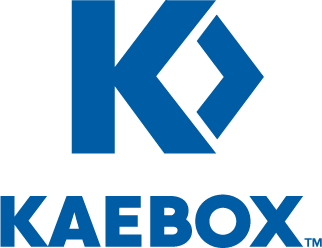How does real-time tracking work for parcel deliveries in the US?
- Kaebox
.jfif/v1/fill/w_320,h_320/file.jpg)
- Aug 10
- 4 min read
“Real-time tracking” is a chain of scan events and telemetry signals tied to your parcel’s unique tracking ID. In the US, carriers (USPS, UPS, FedEx, DHL) attach a scannable barcode to each label. From the first handoff to final delivery, the barcode gets scanned by handhelds, kiosks, conveyor tunnels, and dock portals; some legs also attach GPS time stampsfrom vehicles. Kaebox unifies those events into one live view and pushes updates the moment carriers publish them. How does real-time tracking work for parcel deliveries in the US?
Quick start: Create your label in Kaebox or the mobile app (iOS / Android). You’ll see instant tracking in your shipment details and via notifications. Watch the 90-second walkthrough: How To Access Instant Tracking.
The tracking pipeline (what’s actually happening) How does real-time tracking work for parcel deliveries in the US?
Label + ID created When you buy a label, the carrier generates a unique ID (e.g., starts with “1Z” for many UPS shipments. Or kaebox start with K). Kaebox saves the ID and begins listening for events and ETAs.
Pre-advice (electronic) vs. first physical scan Carriers often register a parcel before they physically receive it (electronic pre-advice). The first physical scan—at a counter, driver pickup, or sort hub—switches the status to “in carrier possession.”
Facility and line-haul scans As the parcel moves through origin, regional hubs, and long-haul legs (truck/air), it passes fixed scanners and handheld scans. Each event includes time, facility code, and next-hop logic.
Last-mile + out-for-delivery The local depot loads the parcel on a route. A device scan (often with GPS context) triggers Out for Delivery. Delivery confirmation closes the chain (sometimes with photo/geo evidence, depending on carrier and settings).
Exceptions & handoffs Address issues, weather holds, missed scans, customs (international), or cross-carrier handoffs generate exception events. Kaebox surfaces the cause and recommended next steps.
What “real-time” means in practice
Publish cadence: Most carrier events post within seconds to minutes of the scan. Some facilities batch uploads; rural stops can delay posts.
GPS vs. scan-only: Not all networks expose live truck locations. Many provide scan-verified waypoints and predictive ETAs; Kaebox shows both without overstating precision.
Unified language: Carriers use different terms for similar states. Kaebox maps them to a clear, unified status model (e.g., Accepted → In Transit → Out for Delivery → Delivered), so you don’t have to decode jargon.
How Kaebox enhances tracking (beyond a carrier page)
One place for all carriers. Compare and track USPS/UPS/FedEx/DHL in a single dashboard: Web Shipping Dashboard.
Instant visibility from the moment you buy the label. No waiting for a public page to populate.
Proactive exception prompts. When an address or access issue appears, Kaebox flags it and suggests the fix.
Driver-assisted labeling & kiosk scans. If you used Pickup or a Kaebox kiosk, those events show up immediately (label printed, package accepted). Learn more:
Want hands-free updates? Ask Kaebox AI on ChatGPT:
“Track 1Z…” or “Where’s my package to 90210 that shipped yesterday?”
Reading common events (and what to do)
Label Created / Shipment Info ReceivedElectronic pre-advice only. Action: Wait for first physical scan or ensure the package was handed off.
Accepted / Origin Scan Carrier has it. Action: none—tracking should update steadily.
In Transit / Departed Facility Moving between hubs; gaps of several hours are normal.
Arrived at Facility Now in the destination region or intermediate hub.
Out for Delivery On a vehicle for delivery today.
Delivery Attempted Check access codes, gate, signature needs; reschedule or approve safe-drop if available.
Delivered Completed. For proof or issues, open details in Kaebox.
Tip: For high-value items, add coverage during label purchase: Add Insurance tutorial.
Why scans sometimes look “stuck”
Missed dock scan: The parcel moved but wasn’t scanned at one hop; it will often “catch up” at the next facility.
Batch uploads: Some terminals sync in batches; events appear together later.
Address anomalies: Suite/unit mismatch can pause last-mile. Kaebox flags this early so you can correct it.
Weather / network holds: Expect delayed ETAs; Kaebox updates when carriers post advisories.
If your parcel seems idle beyond the promised SLA, open the shipment in Kaebox and tap Help; our team can nudge the carrier with the precise facility and leg.
Step-by-step: get real-time tracking in Kaebox
Create a label on kaebox.com or the app (iOS / Android).
Choose Pickup (driver prints at your door) or use a Kaebox kiosk to print and drop fast (learn label printing: Kaebox blog guide).
Track instantly in Kaebox, and optionally share costs with a teammate using Split & Share payment.
For shipping strategy, see: Simplify Your Shipping Experience with Kaebox.
FAQs
Is GPS live for every package?Not always. Many networks provide scan-based waypoints and predictions. Kaebox shows what’s available and never fakes “live truck dots” when carriers don’t supply them.
Why does ETA change?ETAs are recalculated at each event; weather, capacity, or air/line-haul changes can shift delivery windows.
Can I track international parcels?Yes. Kaebox tracks cross-border shipments, including customs events. (For documentation, Kaebox AI can help generate commercial descriptions and HS hints.)
What about privacy?Kaebox uses label and tracking data only to manage your shipment, with encryption in transit and at rest. You control notifications and data sharing.




Comments